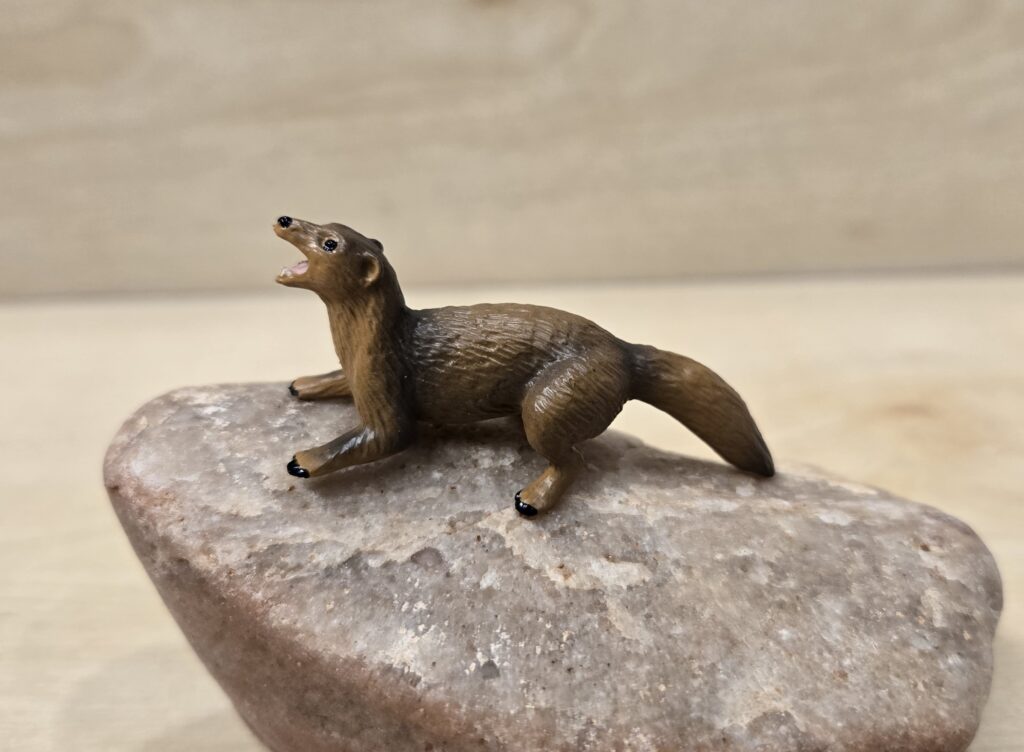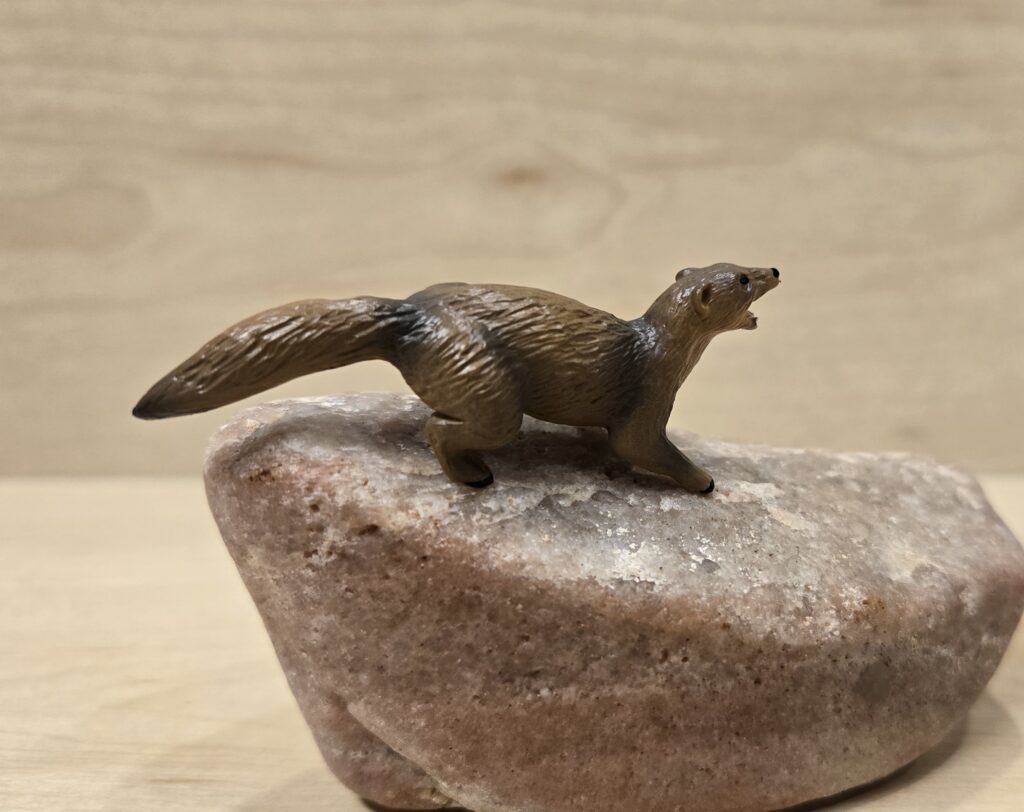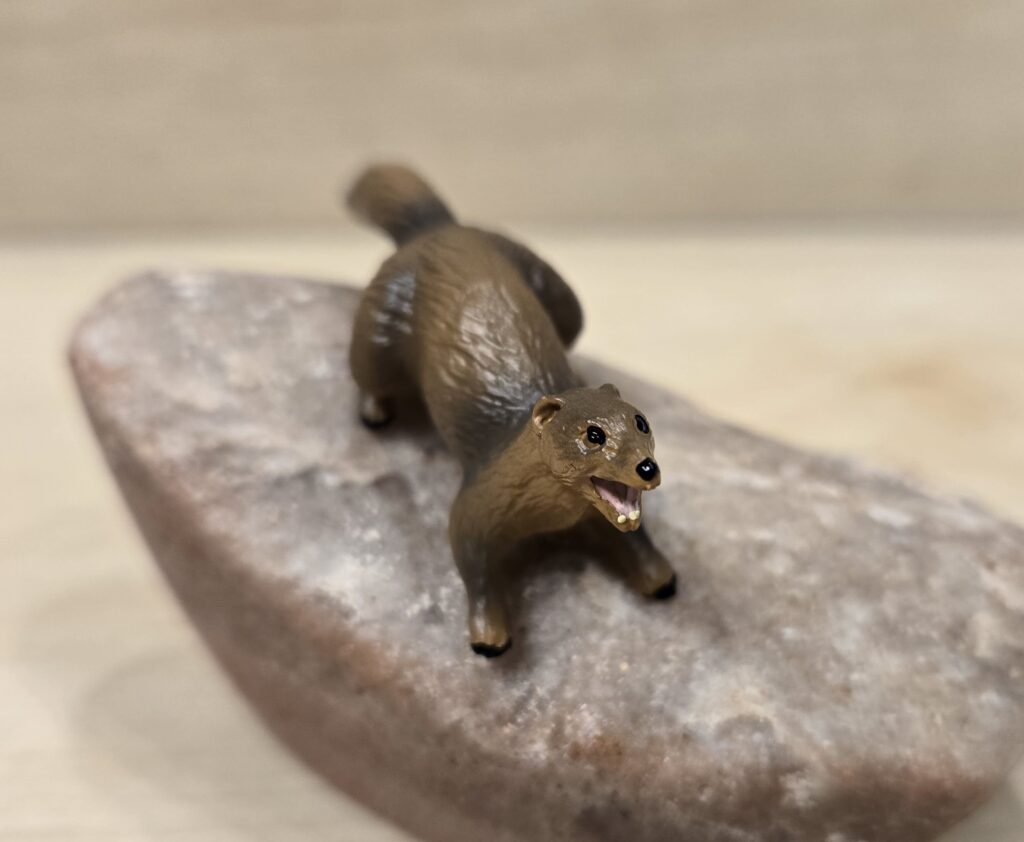In late 2023, Eikoh released another collection in their Miniatureplanet line. Typically, these releases are marked by ‘volumes’, which would make the set Volume 23 if I am doing the math right, although there is no indication on the accompanying paperwork that this is the case. There is a number ’13’ on the paperwork after ‘Miniatureplanet’, but there have clearly been more than 13 sets, and there are more than 13 animals in this particular set (16 to be precise). Online searches all seem to refer to this set as ‘Miniature Planet 2023’ (which is interesting, because in early 2023 Eikoh also released a dinosaur set in the Miniatureplanet line…). Oh well, regardless of the ‘official’ designation of the set, today we will be looking at one of the most interesting components of it, the mongoose. When initial promo pics first came out, several ideas were tossed around on the identity of this mongoose (translation of the accompanying paperwork also only comes up with ‘mongoose’). One thought was an animal that isn’t even a true mongoose, the falanouc (Eupleres goudotii). Now that I have the figure in-hand, I don’t think the proportions are right for a falanouc (besides, Eikoh’s designations are usually not inaccurate, so if they are calling this a mongoose, it was probably intended to be a ‘true’ mongoose). I tried to do a deep dive into a potential ID for this critter, consulting both textbooks and online resources, and in the end for my personal collection I have decided to database it as the long-nosed mongoose, Xenogale naso, based on the length and form of the snout and tail. This identification is tenuous, I will admit, and that’s why multiple mongoose genera that might also be likely candidates are tagged for the Blog. The long-nosed mongoose lives in wetlands and rainforests of tropical West-Central Africa. It has a home range of 100-110 acres and is heavily dependent on water. It is currently classified as ‘Least Concern’ by the IUCN.

The figure has a total raw length of about 6 cm. The posture makes calculating a scale, but the body length (exclusive of the tail) comes to approximately 4.5 cm for a scale of 1:8.9-12.9 for a female or 1:9.5-1:13.3 for a male of X. naso.

The animal is sculpted in what appears to be a defensive posture, with it’s head alert and it’s mouth wide open. The fur is finely textured and it’s finished with a semi-gloss paint. The length of the snout and tail are two of the features that led to my identification of X. naso.

The base color is tan/light brown (a little lighter that what appears in my pics) with darker brown accents, especially where the animal bends and at the tip of the tail. The eyes, nose, and nails are black. The inside of the mouth is pink and couple teeth are painted white in the lower jaw.

Overall, this is a rather simple toy, but gives collectors the opportunity to add a mongoose to their collection, regardless of the identification one chooses. Mongooses, and feliform carnivorans that are not cats or hyenas, are relatively uncommon to rare in our hobby, so it’s nice when one comes along. Despite the ambiguity of the identification, this little gem comes recommended, especially to collectors of interesting taxa.

Disclaimer: links to Ebay and Amazon on the AnimalToyBlog are affiliate links, so we make a small commission if you use them. Thanks for supporting us!



